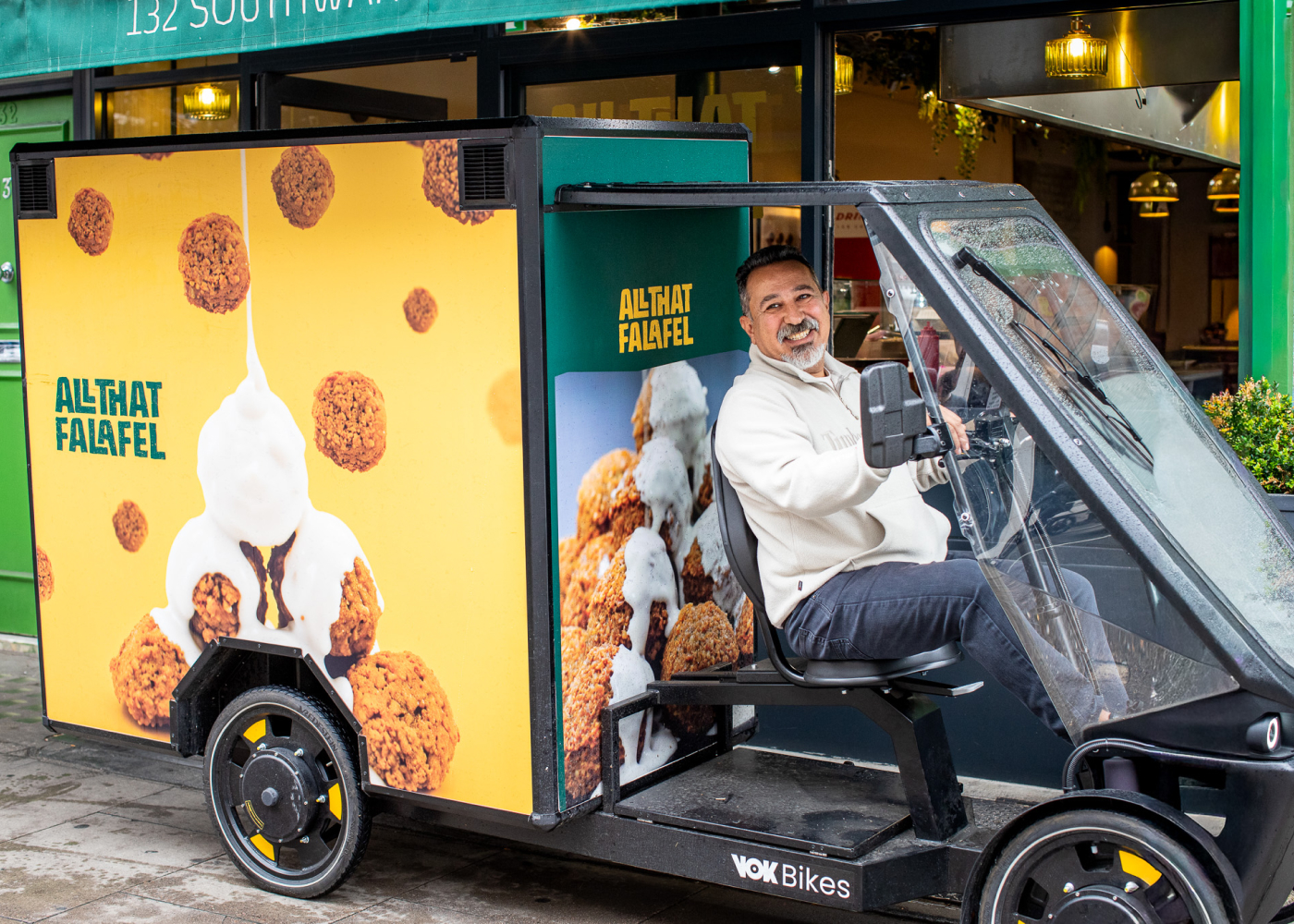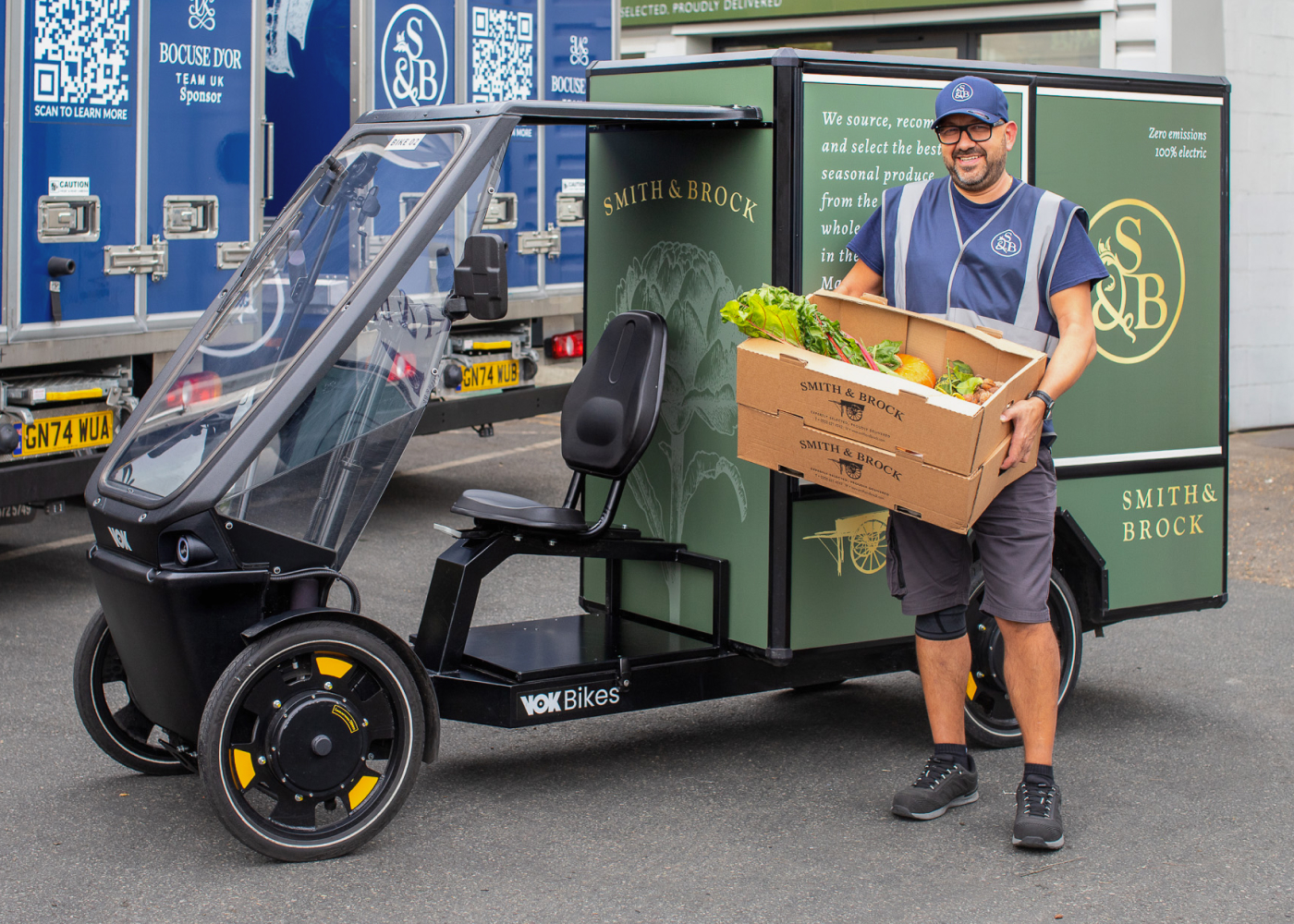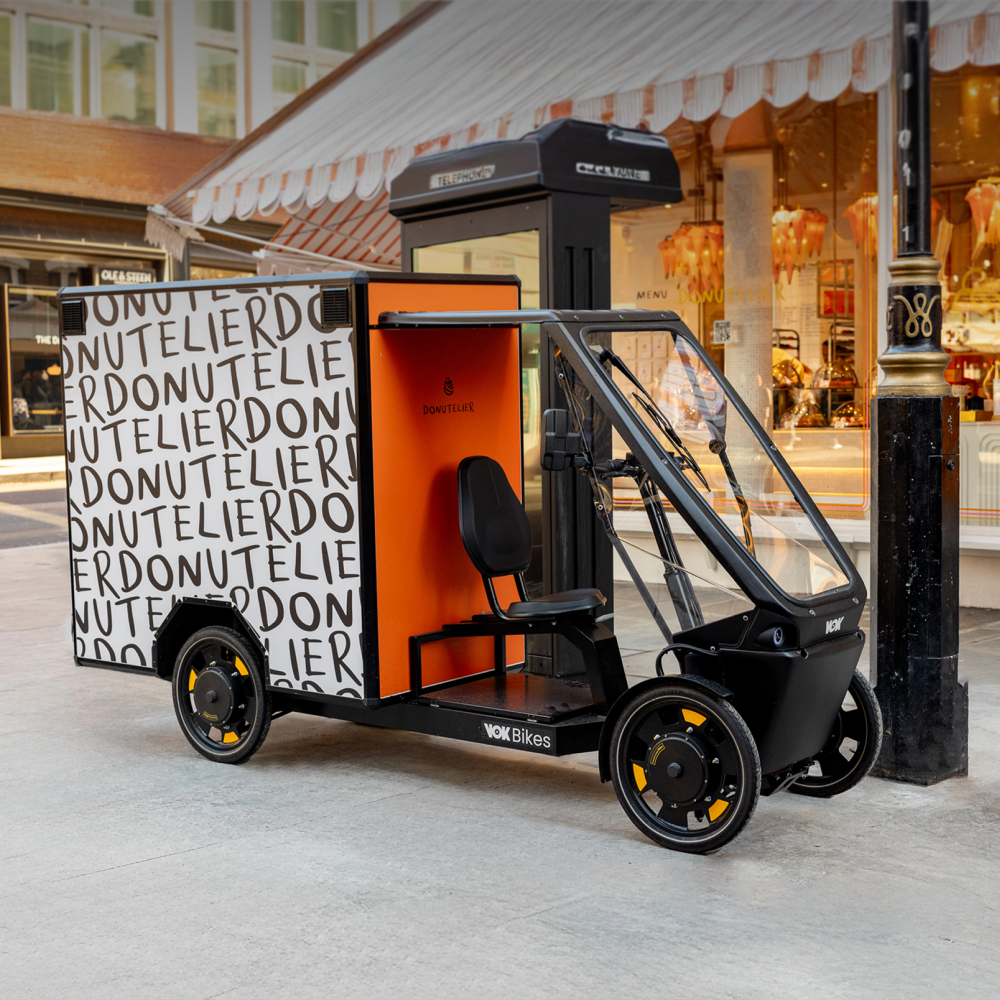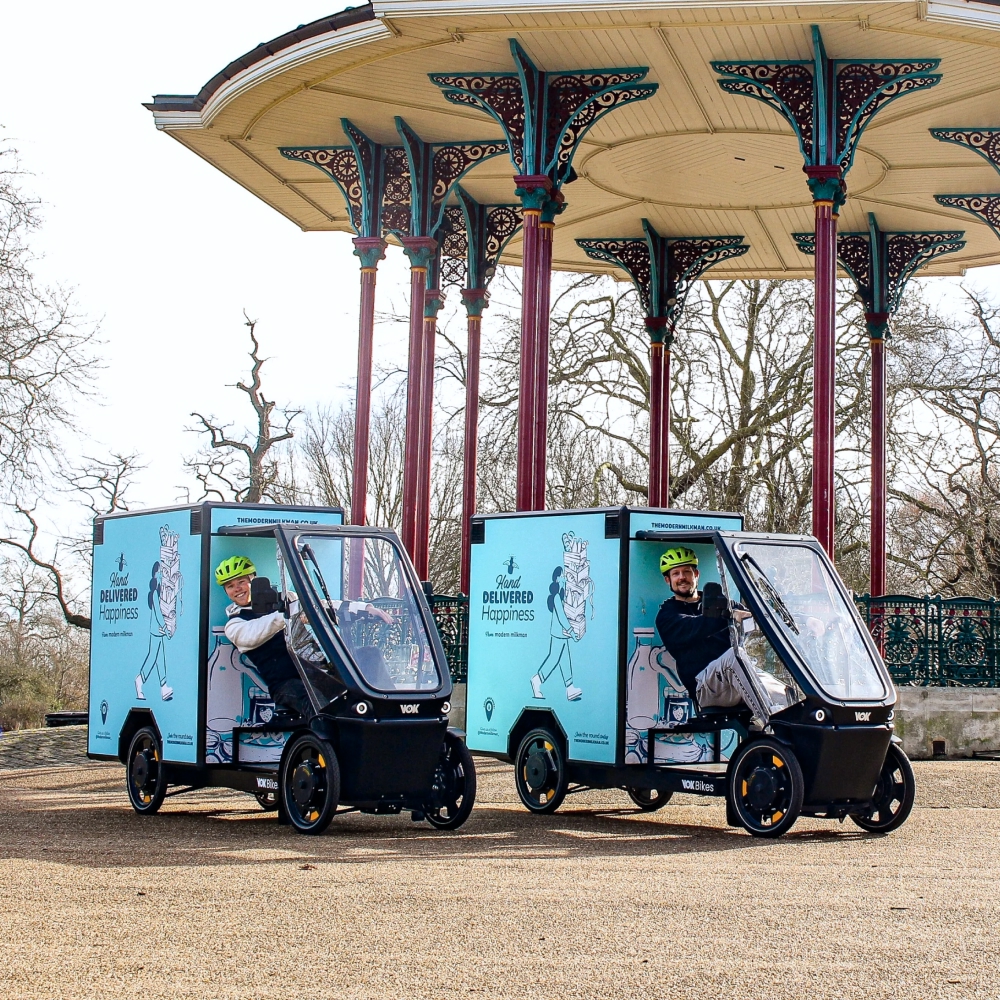CLIENTS
Happy clients from London to Brussels to Dublin

Vok is the best investment I ever made for my business
“The best investment I ever made! And we even get new catering clients!” All That Falafel has 3 locations near London Bridge, they use Vok for catering services & daily logistics between sites.


Delivering fresh produce to restaurants & hotels
Before Vok, heavy traffic was slowing down their vans. After 12 months with Vok, they’ve transformed their second delivery rounds to Central London. Vok Bikes help them go greener, boost brand visibility, and move closer to B Corp accreditation.


How SEX BRAND delivers sex-positive goods with increased visibility
Brand buzz and logistics in one! SEX BRAND shows how the Vok bike can power fast deliveries and bold street-level marketing. When talking about the highlights of Vok, founder Jack can’t hide his excitement as he laughs: “Firstly – I mean, riding it! It’s such fun! And the emotions are great. People smile, they point, they talk to you. It’s very rewarding.”

Donutelier’s secret recipe for 50% faster deliveries
Vok enables efficient transport of up to 300kg of frozen goods daily, ensuring product freshness and consistency across stores. By avoiding vans and third-party couriers, they’ve cut delivery time by 50%, eliminated fuel costs, and enjoy free parking.


100 deliveries per day and increased satisfaction
“We love these bikes, not only can we reach more customers, delivering weekly, delicious essentials straight to your doorstep, but there’s also a whole host of other reasons why we think their a good thing.”


STIHL showcases and charges their tools with mobile product display
Vok Bikes helped us showcase our commitment to sustainability at the trade fair. Their electric bike, equipped with battery charging and tools, let us demonstrate how zero-emission mobility supports our work. It perfectly complemented our display of mobile power supplies and battery-powered tools, showing that STIHL goes beyond machines – we offer complete, forward-thinking solutions.

